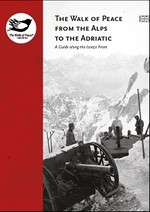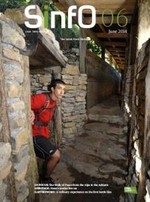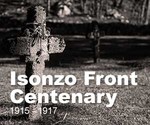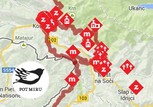Church of the Holy Spirit, Javorca
The Memorial Church of the Holy Spirit is located in a stunning natural environment on the Polog Plateau in the Julian Alps. The building of the Church was linked to events on the Isonzo Front and constructed between 1 March and 1 November 1916; the Church, financed from voluntary contributions, was built by soldiers of the 3rd Mountain Brigade, a battle unit of the XV Austro-Hungarian Corps in memory of their fallen comrades. Despite the vicinity of the front line, it was unnoticed by the enemy and located at approximately equal distances from the main positions of the Brigade on three mountains: Vodil vrh, Mrzli vrh, Sleme and Rdeči rob.
The building was designed by Viennese architect Remigius Geyling (1878–1974), who also arranged its decoration. Construction work was headed by First Lieutenant Géza Jablonszky. The wooden parts of the altar in the interior of the church are the work of carpenter Anton Perathoner from St. Ulrich. The lower section of the church is of stone, while the upper part of the construction is of larch that the soldiers carried from the valley and processed at the site. There is a monumental staircase leading to the church. The exterior of the church features a bell tower with a sundial, and the imperial crest together with the painted and stylised coats-of-arms of the 20 provinces that made up the Austro-Hungarian Empire. The bell bears the inscription PAX (peace). The interior of the church is divided into three parts. A major distinguishing feature of the church is the Art Nouveau style in which it is painted and decorated.
The idea of the Memorial Church is symbolised in the oak pages of a wooden book attached to the nave walls; 2,565 names of those who fell in surrounding battlefields were scorched into this memorial book. Oak panels bear the inscribed names of soldiers who had fallen by the beginning of August 1916. Most of these soldiers are buried at the military cemetery in Loče pri Tolminu. The Memorial Church is not only a cultural jewel; it also conveys a symbolic message of unity and peace: "Ultra cineres hostium ira non superest – Hatred should not be pursued beyond the grave." As in wartime, when it offered sanctuary to soldiers of various nationalities and religions, in present time, too, the church serves as a house of worship and is visited in large numbers by people of various nationalities and religions. It stands as a reminder of the horrors of war, and calls for reconciliation, inner and lasting peace. The Memorial Church of the Holy Spirit has been proclaimed a cultural monument of national importance, and is the only sacred place in Slovenia featuring the Art Nouveau style in its entirety. In 2007, it was awarded the European Heritage Label under the intergovernmental initiative.






